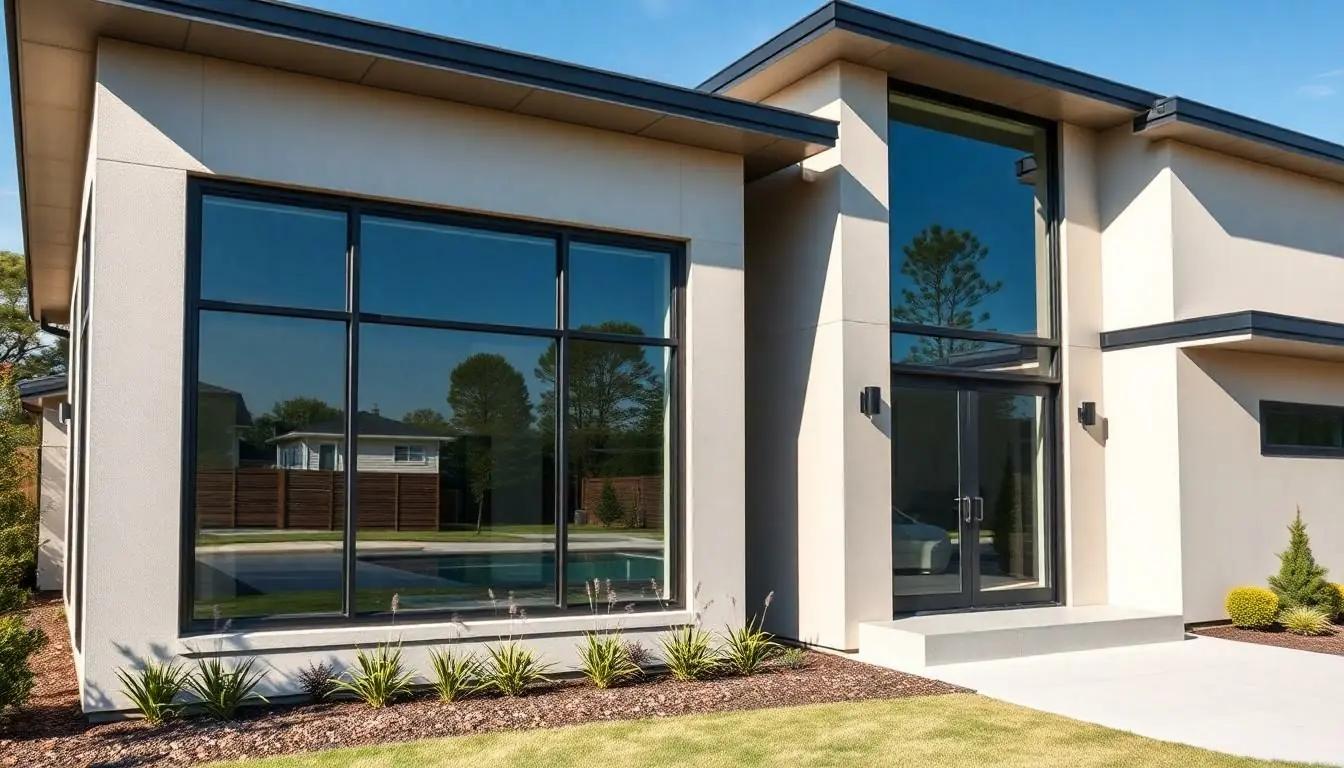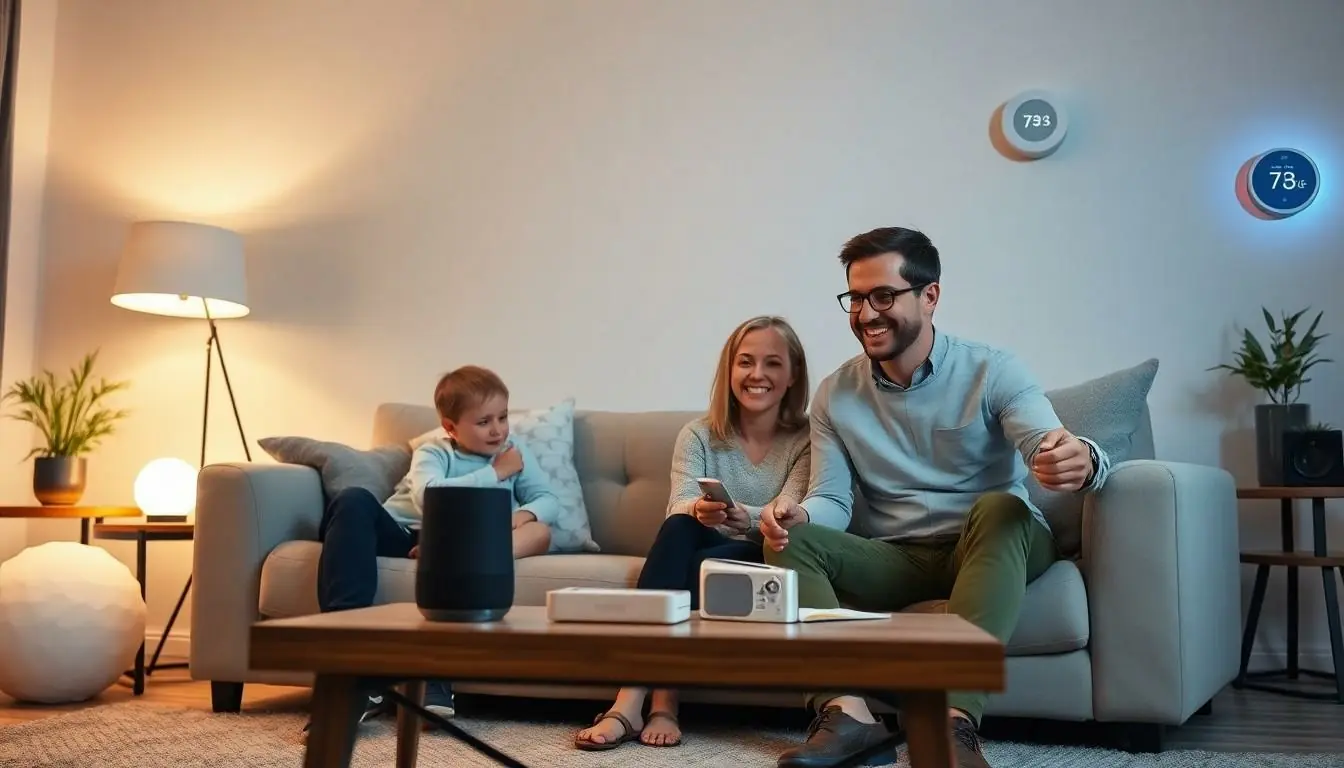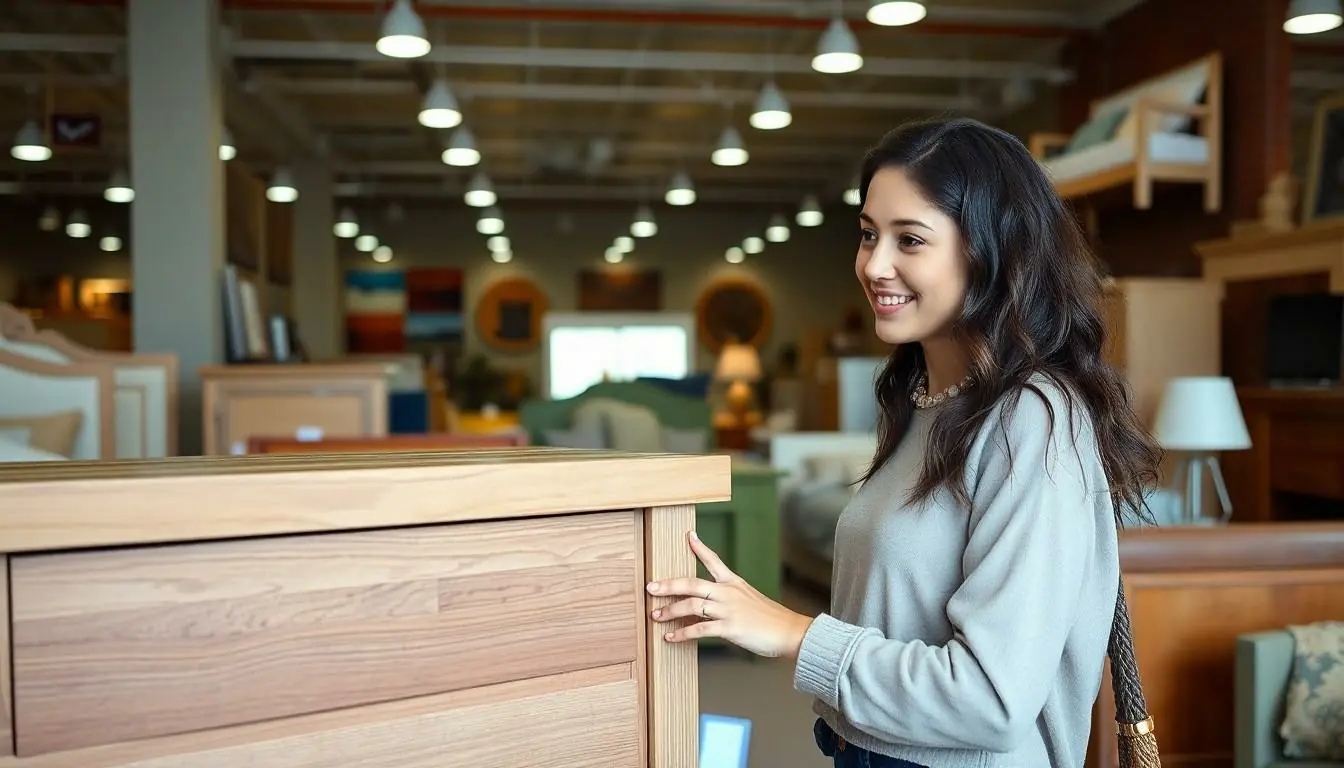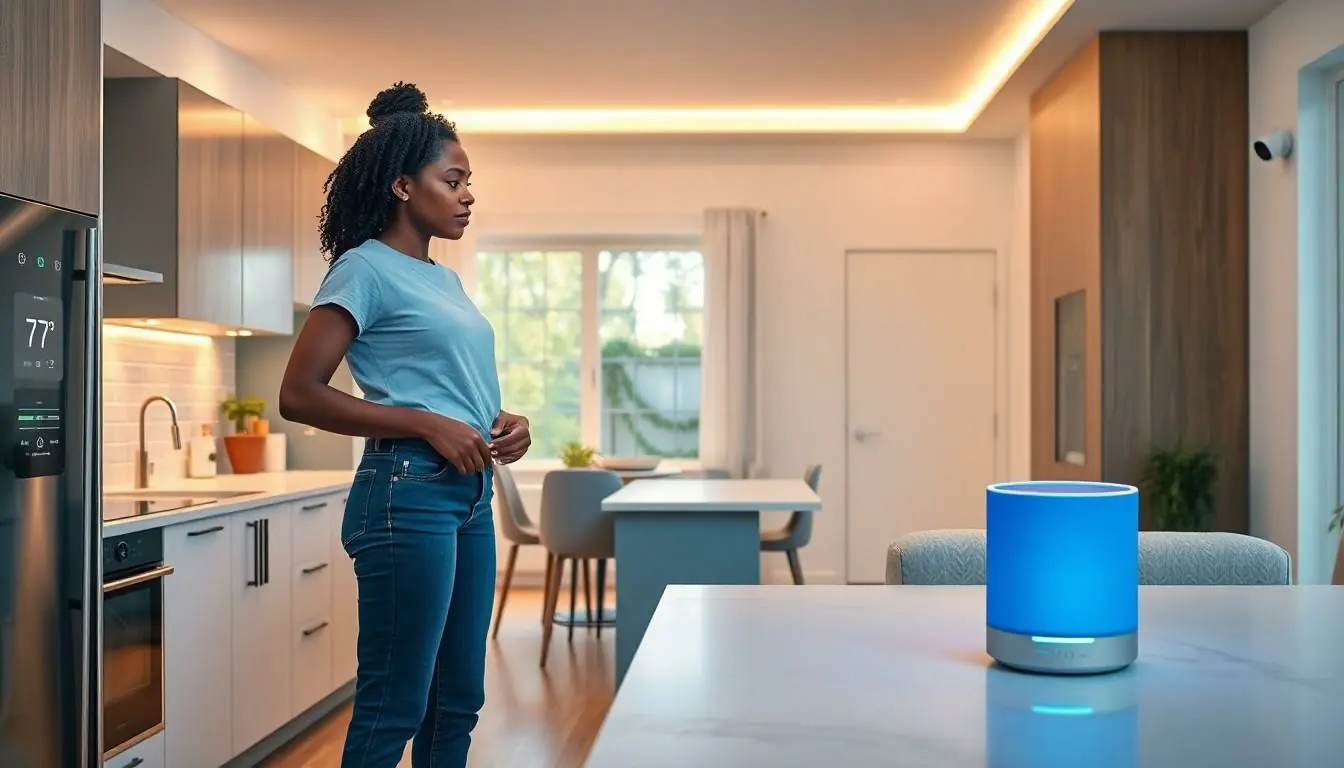Imagine a world where your windows do more than just frame the view of your neighbor’s questionable lawn ornaments. Smart windows are revolutionizing the way homeowners interact with their environment, offering energy efficiency and convenience that would make even the most tech-savvy homeowner swoon. These high-tech marvels can adjust their tint based on sunlight, keeping homes cooler in summer and warmer in winter—all while saving on those pesky energy bills.
But wait, there’s more! Smart windows not only enhance comfort but also add a touch of modern elegance to any home. They’re like the Swiss Army knife of windows—versatile, stylish, and ready to tackle whatever the weather throws their way. So, if you’re tired of your old, one-dimensional windows, it might be time to let in some smart technology and transform your living space into a futuristic haven.
Table of Contents
ToggleOverview of Smart Windows for Homes
Smart windows integrate technology to enhance energy efficiency and convenience. These advanced windows automatically adjust their tinting based on sunlight exposure. This feature helps maintain comfortable indoor temperatures while significantly reducing energy costs.
The innovative design of smart windows contributes to modern aesthetics in homes. Homeowners appreciate the clean lines and minimalistic look that smart windows provide. By replacing traditional windows, individuals create a stylish and functional living space.
Numerous types of smart windows exist, each with unique functionalities. Electrochromic windows change their tint when electrical voltage is applied, allowing for precise control of light and heat. Photochromic windows react to UV light, darkening automatically in bright conditions. Thermochromic windows adjust based on temperature, providing passive energy control.
In addition to energy savings, smart windows promote privacy and comfort. Many models can be programmed for various settings, making it easy to customize the ambiance. For instance, users can concentrate natural light in workspaces while maintaining privacy in living areas.
Smart windows also offer environmental benefits. By reducing reliance on heating and cooling systems, they decrease overall energy consumption. This reduction translates into lower utility bills and a smaller carbon footprint.
Integrating smart windows into homes reflects a forward-thinking approach to living. As technology advances, the adoption of smart windows becomes increasingly appealing. Homeowners who consider this upgrade will find their living spaces not only more efficient but also more inviting.
Benefits of Smart Windows
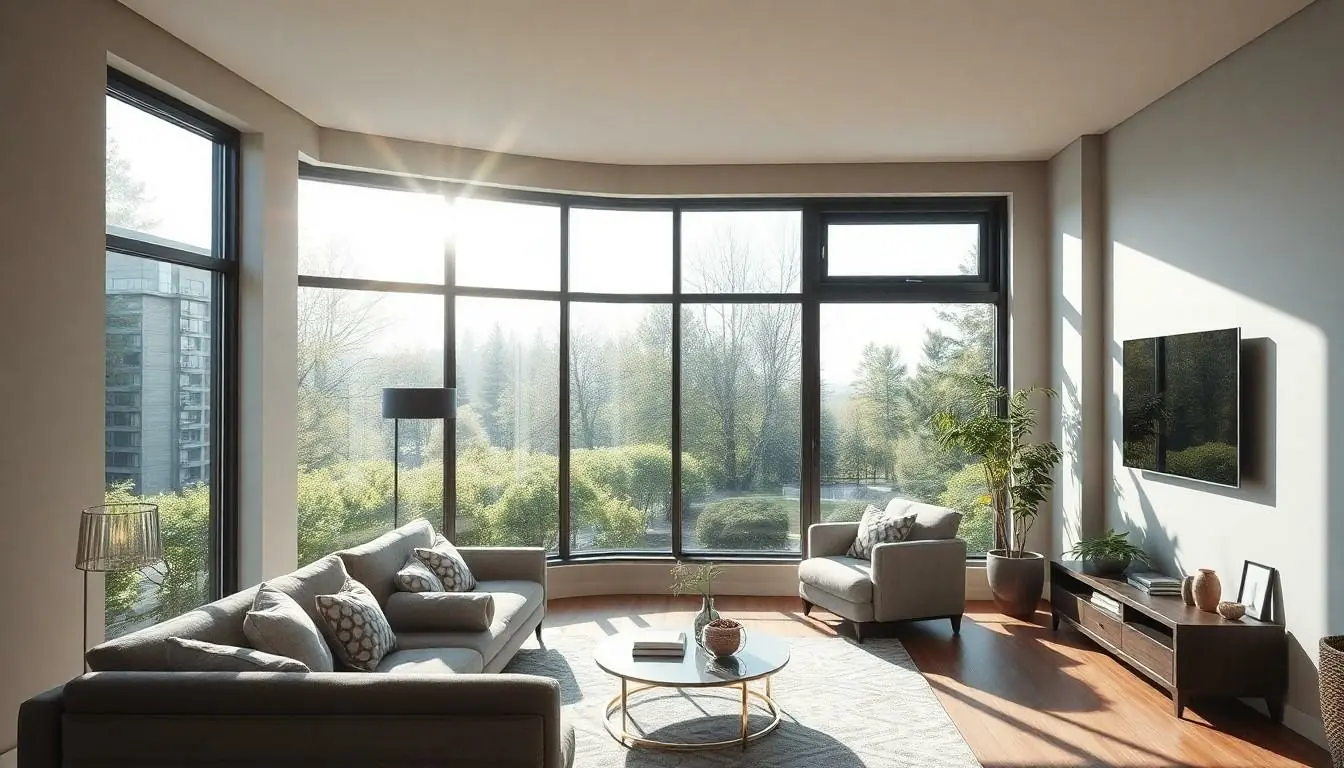
Smart windows offer numerous advantages that enhance the homeowner’s experience while promoting energy efficiency and style. These windows not only improve aesthetics but also provide essential functionalities that align with modern living.
Energy Efficiency
Energy efficiency ranks high among the benefits of smart windows. By automatically adjusting tint, smart windows minimize heat gain indoors. This feature results in reduced reliance on air conditioning systems, leading to lower energy bills. In fact, studies indicate that smart windows can cut cooling costs by up to 30%. Additionally, the ability to block harmful UV rays protects furnishings and interiors from fading, enhancing longevity. Homeowners appreciate the potential for energy savings, contributing to a more sustainable living environment.
Enhanced Comfort
Enhanced comfort emerges as another key benefit of smart windows. Indoor temperatures remain stable regardless of outdoor weather conditions due to the ability of these windows to adapt to sunlight exposure. Homeowners enjoy a consistently pleasant living space without the discomfort of glare or hot spots. Customizable settings further allow occupants to create an atmosphere tailored to their preferences. Moreover, privacy control become effortless, giving residents peace of mind. Improved comfort and usability make smart windows an attractive upgrade for any home.
Types of Smart Windows
Smart windows come in several varieties, each tailored to specific needs for light and temperature control. These types include electrochromic and photochromic windows, known for their unique properties.
Electrochromic Windows
Electrochromic windows utilize a special coating that changes tint when an electrical charge is applied. These windows can darken or lighten in response to external light conditions, promoting energy efficiency and comfort. Families appreciate their ability to adjust automatically, reducing glare and maintaining a pleasant indoor atmosphere. This technology can decrease energy consumption significantly, reducing cooling costs by up to 30%. Additionally, homeowners benefit from UV protection, which helps preserve interior furnishings.
Photochromic Windows
Photochromic windows react to sunlight exposure by automatically tinting and reducing glare. These windows are particularly effective in regions with high sunlight, offering an excellent option for maintaining indoor comfort. By filtering out harmful UV rays, they protect skin and furnishings from damage. Homeowners appreciate the low maintenance aspect; no electrical components are needed for operation. These windows contribute to energy efficiency while providing a modern aesthetic, between seamless integration and reduced reliance on artificial heating and cooling.
Installation and Maintenance
Installing smart windows involves careful planning and precise execution to ensure optimal performance and efficiency. Homeowners should hire professionals with experience in smart window technology for installation. Initial steps include measuring the window frames and selecting the appropriate smart window types based on home requirements. Next, installers will remove the existing windows and prepare the frame to accommodate the smart technology. Finally, they will seal the new windows properly to prevent air leaks and enhance energy efficiency.
Installation Process
During installation, technicians will ensure electrical connections are made correctly for electrochromic windows. Selecting appropriate controls, such as smartphone apps or wall-mounted switches, enhances functionality. Once in place, smart windows must be calibrated to respond accurately to environmental changes. Technicians may demonstrate operation to guarantee that homeowners understand the system’s capabilities. Successful installation leads to immediate energy savings and improved comfort throughout the home.
Maintenance Tips
Regular maintenance ensures smart windows function effectively over time. Homeowners should clean the glass surface with soft, non-abrasive materials to avoid damage. Checking electrical components periodically for wear or malfunction promotes longevity. Additionally, existing seals must be inspected to ensure efficiency remains high. If problems arise, seeking professional assistance can address issues before they impact energy performance. Proper maintenance ultimately maximizes the benefits of smart windows and maintains a sustainable living environment.
Cost Considerations
Smart windows represent a significant investment for homeowners. Initial costs can range from $50 to $100 per square foot, depending on the technology type and installation complexity. Electrochromic options tend to be on the higher end of the spectrum due to their advanced technology and installation requirements.
Installation costs add another layer of expense. Professional installation services typically charge between $100 and $250 per window, factoring in the complexity of the electrical connections and calibration for optimal performance. Homeowners must consider these expenses when budgeting for a smart window upgrade.
Long-term savings significantly offset the initial investment. Energy-efficient features can reduce cooling costs by up to 30%. Over time, homeowners experience lower utility bills, particularly in hot climates where air conditioning is frequently used.
Maintenance costs for smart windows vary. Regular cleaning and occasional electrical check-ups are necessary to sustain efficiency. Non-abrasive cleaners are recommended, ensuring the longevity of the glass without damaging its advanced coatings.
Potential incentives exist for adopting energy-efficient technologies. Some local governments offer rebates or tax credits for installing smart windows, which can help ease the financial burden. Homeowners should research available incentives within their region to maximize savings.
Evaluating long-term benefits is crucial. When considering the upgrade, weigh initial costs against future savings. Improved energy efficiency, enhanced comfort, and increased property value contribute to the overall return on investment. In this way, the financial aspect of smart windows extends beyond mere purchase prices, reflecting a commitment to sustainable living and modern home improvements.
Future Trends in Smart Windows
Advancements in smart window technology promise to transform home environments. One significant trend focuses on integrating smart home systems, allowing windows to interact seamlessly with other smart devices. This integration enhances overall energy management and provides a more cohesive smart living experience.
Another emerging development involves the incorporation of artificial intelligence (AI). AI algorithms can analyze environmental factors, adjusting window settings automatically based on weather patterns or time of day. This capability increases energy efficiency, leading to smarter energy consumption.
Popularity in sustainable materials is also on the rise. Manufacturers invest in eco-friendly coatings and glass, promoting not only durability but also a reduced environmental impact. Homeowners benefit through improved insulation, further decreasing energy costs.
At the same time, expansion in the market for retrofitting existing windows is anticipated. Options that allow for the upgrade of traditional windows to smart windows appeal to many homeowners looking to modernize without full replacement. This trend makes smart technology accessible for various budgets and home styles.
The design of smart windows continues to evolve. Minimally visible technology enhances aesthetic appeal while maintaining functionality. Homeowners enjoy the modern, sleek appearance of these windows as they blend seamlessly with architectural styles.
As energy regulations become stricter, smart windows align with government standards for energy efficiency. Compliance with these trends offers homeowners both financial incentives and potential tax credits.
Collectively, these future trends in smart windows signify a shift toward smarter, more efficient, and environmentally conscious home solutions. Emphasizing comfort and energy savings, smart windows represent a significant evolution in residential design and technology.
Smart windows represent a significant advancement in home technology that combines energy efficiency with modern design. By incorporating features like automatic tinting and UV protection, these windows not only enhance comfort but also contribute to reduced energy costs and environmental sustainability.
As homeowners increasingly seek solutions that balance aesthetics with functionality, smart windows stand out as a valuable investment. With ongoing advancements in technology and design, the future promises even more innovative options, making smart windows a smart choice for those looking to upgrade their living spaces. Embracing this technology reflects a commitment to a sustainable and comfortable home environment.

